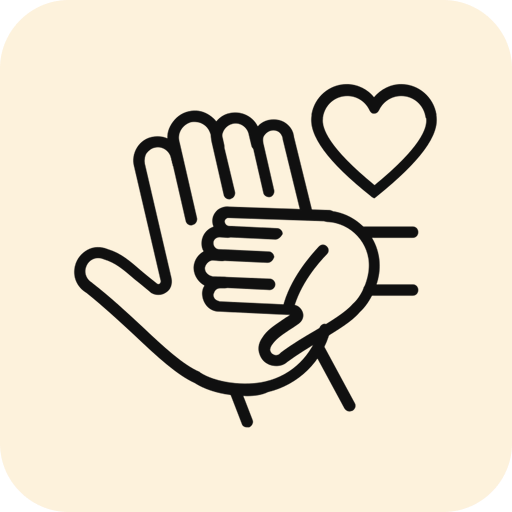Get Rid of Pimples Overnight: Expert Tips & Real Solutions
 Struggling with a pimple on your face that seems to pop up at the worst moment? You’re not alone! Acne removal can feel like a battle, but with the right tips, a stubborn breakout can look less inflamed overnight. This guide covers everything you need to know, from understanding different types of pimples on face (including pimples on the forehead, nose, chin, cheeks, and jawline), what causes sudden flare-ups, to the best pimples treatment at home and science-backed product routines for quick relief. Whether you’re searching for how to remove pimples overnight, looking for real home remedies for pimples, or want long-term prevention, this blog is packed with easy, expert-backed answers!
Struggling with a pimple on your face that seems to pop up at the worst moment? You’re not alone! Acne removal can feel like a battle, but with the right tips, a stubborn breakout can look less inflamed overnight. This guide covers everything you need to know, from understanding different types of pimples on face (including pimples on the forehead, nose, chin, cheeks, and jawline), what causes sudden flare-ups, to the best pimples treatment at home and science-backed product routines for quick relief. Whether you’re searching for how to remove pimples overnight, looking for real home remedies for pimples, or want long-term prevention, this blog is packed with easy, expert-backed answers!
Types of Pimples on Face
 Not all pimples are created the same! Knowing what type you have is key to effective pimples treatment at home:
Not all pimples are created the same! Knowing what type you have is key to effective pimples treatment at home:
-
Whiteheads: Small white acne on the face are often caused by clogged pores.
-
Blackheads: Dark spots resulting from open, clogged pores.
-
Papules: Red, inflamed bumps that are tender to the touch.
-
Pustules: Acne with a white or yellow center—the “classic” breakout.
-
Nodules/Cysts: Larger, deeper, and often more painful acne on face.
Acne Breakouts by Location

-
Forehead: Oily scalp, hair product buildup, or irregular sleeping habits often lead to acne on the forehead or forehead breakouts.
-
Nose: Oil glands are super active here, so blackheads and whiteheads are common acne on the nose.
-
Chin: Hormonal shifts, especially around your period, can cause persistent breakouts on your chin.
-
Cheeks: Touching your face, dirty pillowcases, and phone bacteria often lead to acne on your cheeks.
-
Jawline: Hormonal acne or stress-related breakouts like to set up camp here.
💡Pro Tip: Spot the pattern! Breakouts on the forehead, chin, and cheeks can signal different issues, so your pimples on face removal tips should target both the type and location.
Common Causes of Pimples
Understanding what triggers those annoying pimples on face can help you avoid them:
-
Hormonal changes: Menstruation, puberty, stress, or pregnancy
-
Unbalanced diet: Excessive sugar, dairy, or oily foods (hello, spicy fries!) can spark a breakout
-
Improper skincare: Skipping your cleanser or using the wrong products
-
Dirty surfaces: Pillowcases, phone screens, and hands—major culprits for pimples on cheeks and jawline
-
Hair products: Styling gels and sprays can transfer and trigger pimples on the forehead
-
Oil & bacteria build-up: From not washing your face or picking at pimples on face
-
Genetics: Sometimes it's in your DNA. If acne runs in your family, you’re more likely to get breakouts because your genes can influence how much oil your skin produces and how it reacts to bacteria
-
Environmental factors: Pollution, heat & humidity
-
Home remedies: Use comedogenic skincare products, as depending only on random acne treatment at home, instead of effective products, can worsen the problem
How to Get Rid of Acne Overnight?
Woke up with a red, angry pimples on your face? Here’s your step-by-step pimples removal plan, including targeted products for maximum effect:
-
Cleanse with Acne Control Face Wash
Salicylic Acid is a powerful ingredient that penetrates deeply to exfoliate dead skin cells and unclog pores, preventing new pimples and clearing existing ones. Along with it, Azelaic Acid fights acne-causing bacteria and helps fade dark spots, while Cica (Centella Asiatica) calms inflamed skin and reduces redness. Together, these ingredients cleanse your skin thoroughly and prepare it for faster healing. Chemist At Play Acne Control Face Wash combines all three to deliver a gentle yet effective cleansing experience that tackles pimples right from the start.

-
Apply Ice (for swelling)
Wrap an ice cube in a clean cloth and gently press on the pimple for 5–10 minutes. Helps minimize redness and puffiness.
-
Treat skin with Salicylic Acid
Salicylic Acid continues to break down oils and dead skin cells that clog pores, reducing swelling and preventing further breakouts. When paired with Zinc PCA, it also controls excess oil production and calms skin irritation. This powerful combination improves texture, soothes redness, and speeds up recovery from pimples. Our 2% Salicylic Acid Face Serum offers these benefits in a lightweight, non-sticky formula ideal for overnight use, providing targeted care exactly where you need it.

-
Scrub gently twice a week with Gentle Face Scrub
Dead skin and blackheads often trigger more breakouts. Exfoliants like Lactobionic Acid and Mandelic Acid clear away buildup without being harsh, while Walnut Shell Powder polishes the skin and Shea Butter keeps it hydrated. Chemist At Play Gentle Exfoliating Face Scrub balances both—removing impurities without stripping moisture.

-
Spot Treatment
Dab a bit of benzoyl peroxide, or diluted tea tree oil, directly on the pimple for anti-bacterial action.
-
Hydrocolloid Patch
Apply overnight to soak up gunk and protect from picking.
-
Hands-Off Rule
No popping or picking, it slows healing and risks scarring!
-
Moisturize
Lock in hydration with a light, non-comedogenic moisturizer.
-
Don’t pop your pimples 🚫
Don’t pop it! And definitely avoid random home remedies for pimples (like toothpaste or lemon juice), they usually make things worse, not better.
💡Bonus: These steps can be tailored for targeted areas like breakouts on chin, jawline, cheeks, forehead, or nose!
Prevention & Long-Term Care
-
Stick to a consistent routine using suitable products
-
Drink 8 glasses of water a day at least
-
Cut down on excessive sugar
-
Exfoliate gently once a week—don’t overdo it!
-
Always use sunscreen, especially if using actives
-
Don’t touch your face unnecessarily
-
Manage stress to avoid hormonal spikes
-
For persistent or cystic acne, consult a dermatologist for stronger pimple treatment
Summary
Don’t let a sudden pimple on your face throw off your vibe! From expert pimples removal routines and simple home remedies for pimples, to targeted professional products, clearer skin is just a step away. For even more tips, read our latest skin care blogs or shop the Chemist At Play Acne Range—because your glow starts here and Learn how to get rid of elbow & knee pigmentation and mouth pigmentation in our expert guides. Find more ways to solve skin challenges from underarm darkness to everyday glow-ups. Don’t miss out!
Ever seen small dark spots on your legs that give your skin the appearance of the surface of...
Read More about Strawberry Legs: Causes, Treatments & Tips to Prevent ThemIf you're reading this, you probably know more about dandruff than most persistent flakes, an itchy scalp and...
Read More about A Complete Guide to Dandruff Causes, Symptoms & TreatmentsRosemary for hair has made a serious comeback in recent years and for good reason. It’s one of...
Read More about Rosemary for Hair: Benefits, Types & Ways to Use Rosemary for Hair GrowthThe main reason for an oily scalp is the excessive production of sebum, a natural oil released by...
Read More about How to Fix an Oily Scalp Without Drying Out Your Hair?


























